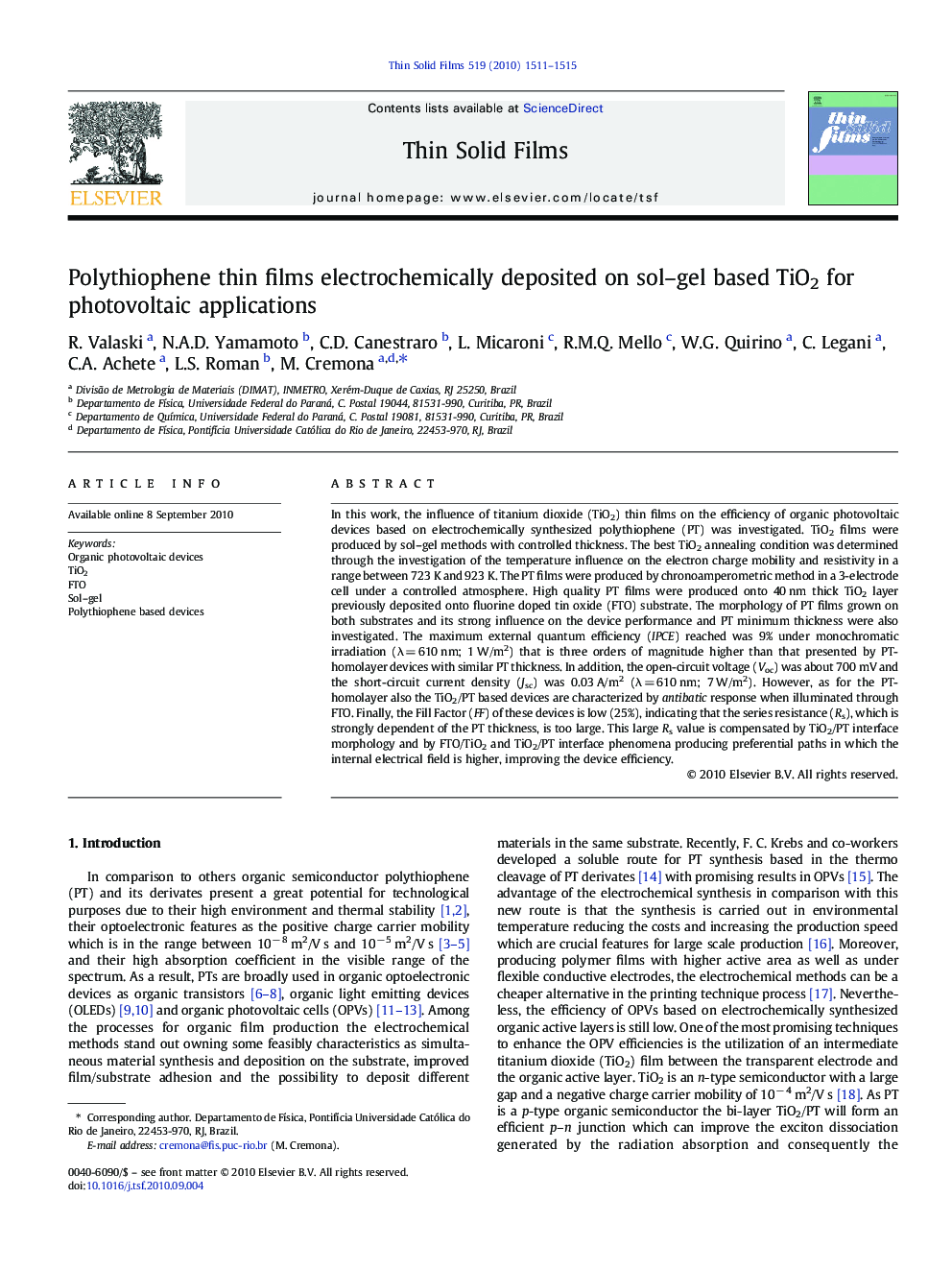| Article ID | Journal | Published Year | Pages | File Type |
|---|---|---|---|---|
| 1669767 | Thin Solid Films | 2010 | 5 Pages |
In this work, the influence of titanium dioxide (TiO2) thin films on the efficiency of organic photovoltaic devices based on electrochemically synthesized polythiophene (PT) was investigated. TiO2 films were produced by sol–gel methods with controlled thickness. The best TiO2 annealing condition was determined through the investigation of the temperature influence on the electron charge mobility and resistivity in a range between 723 K and 923 K. The PT films were produced by chronoamperometric method in a 3-electrode cell under a controlled atmosphere. High quality PT films were produced onto 40 nm thick TiO2 layer previously deposited onto fluorine doped tin oxide (FTO) substrate. The morphology of PT films grown on both substrates and its strong influence on the device performance and PT minimum thickness were also investigated. The maximum external quantum efficiency (IPCE) reached was 9% under monochromatic irradiation (λ = 610 nm; 1 W/m2) that is three orders of magnitude higher than that presented by PT-homolayer devices with similar PT thickness. In addition, the open-circuit voltage (Voc) was about 700 mV and the short-circuit current density (Jsc) was 0.03 A/m2 (λ = 610 nm; 7 W/m2). However, as for the PT-homolayer also the TiO2/PT based devices are characterized by antibatic response when illuminated through FTO. Finally, the Fill Factor (FF) of these devices is low (25%), indicating that the series resistance (Rs), which is strongly dependent of the PT thickness, is too large. This large Rs value is compensated by TiO2/PT interface morphology and by FTO/TiO2 and TiO2/PT interface phenomena producing preferential paths in which the internal electrical field is higher, improving the device efficiency.
